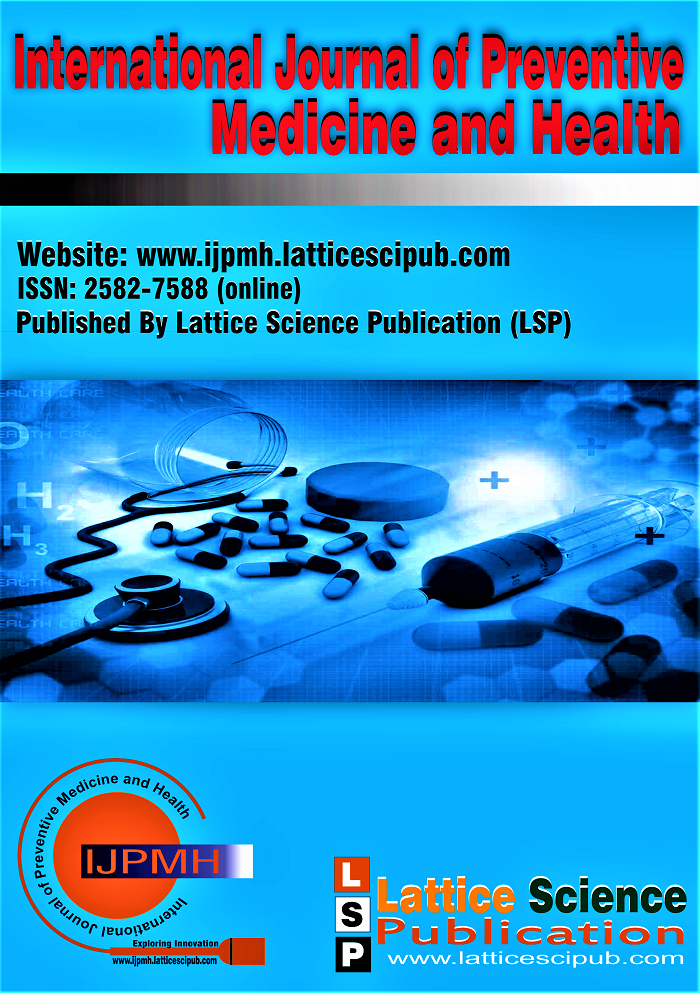Survival Model of Cervical Cancer Patients using the 3-Parameter Weibull Distribution Model
Main Article Content
Abstract
This study aimed to evaluate a parametric survival model for cervical cancer patients treated with ORCI, and a case study was conducted to describe the model. The survey of survival times of cervical cancer patients may help reduce cervical cancer outcomes. Data on socio-demographic characteristics, reproductive status, stages, treatment, and follow-up of the treatment, abstracted from medical files, were considered in model development. The primary objective of this study was to analyse cervical cancer survival times from the diagnosis period using a three-parameter Weibull distribution model. The analysis was performed using the open-source statistical software R and Minitab. The three-parameter Weibull distribution is highly flexible for fitting random data; moreover, it exhibits strong adaptability to various types of probability distributions. When the three parameters are well chosen, it can be equal to or approximate some other statistical distribution. However, the three parameters were estimated to utilize the Weibull model successfully. The distribution of survival times of cervical cancer patients, as analysed, follows the three-parameter Weibull distribution, with required test statistics including the Anderson-Darling significant value and standard probability plots. The use of other parametric distribution models, such as the Gamma, three-parameter Gamma, and Weibull distributions, which encompass various types of hazard functions, is recommended for future studies.
Downloads
Article Details

This work is licensed under a Creative Commons Attribution-NonCommercial-NoDerivatives 4.0 International License.
How to Cite
References
Andersen P.K., organ O., Gill R.D., Keiding N. (1993); Statistical Models Based On Counting Processes, Springer, New York.
DOI: http://dx.doi.org/10.1007/978-1-4612-4348-9
Collet D. (2003); Modelling survival data in medical research, Chapman and Hall, London. DOI: https://doi.org/10.1201/b18041
Cox D.R. (1975); Partial likelihood, Biometrika, Vol. 62, No. 2, 269-276, DOI: https://doi.org/10.1093/biomet/62.2.269
Cox, D. R (1972): Regression models and life tables. Journal of the Royal Statistical Society: Series B, 34:187-220,
DOI: https://doi.org/10.1111/j.2517-6161.1972.tb00899.x
Everitt B.S. and Hothorn T. (2005); A handbook of Statistical analyses using R, CRC Press, London.
https://digitallibrary.tsu.ge/book/2019/september/books/A-Handbook-of-Statistical-Analyses.pdf
Harrel F.E., (2001); Regression modeling strategies: With applications to linear models, logistic regression and survival analysis, Springer, New York. DOI: https://doi.org/10.1007/978-1-4757-3462-1
Hosmer D.W and Lemeshow S (1999); Applied survival analysis: Regression modeling to time to event data, John Wiley & Sons Inc, New York. DOI: https://doi.org/10.1002/9780470258019
Izenman A.J. and Tran L.T. (1990); Estimation of the survival function and hazard rate, Journal of Statistical Planning and Inference, Vol 24, 233-247. DOI: https://doi.org/10.1016/0378-3758(90)90044-U
Kalbfleish & Prentice (2002); The statistical analysis of failure time data, 2nd edition, Wiley and Sons, New York.
DOI: http://doi.org/10.1002/9781118032985
Kardaum, (1993); Statistical analysis of male larynx cancer patients: A case study. Statistical Nederlandica, 37:103-126.
https://www.iosrjournals.org/iosr-jhss/papers/Vol.%2021%20Issue5/Version-1/E0215012234.pdf
Lee E. T. and Wang J. W. (2003); Statistical Methods for Survival Data Analysis, 3rd edition, Wiley & Sons Inc, New Jersey.
DOI: http://doi.org/10.1002/0471458546
Leung, K.M., R.M. Elashoff and A.A. Afifi, (1997); Censoring issues in survival analysis, Annual Review of Public Health, 18:83-104,
DOI: https://doi.org/10.1146/ANNUREV.PUBLHEALTH.18.1.83
Lwanga S.K. and Lemeshow S. (1991); Sample size determination in health studies: A practical guide, WHO manual.
https://iris.who.int/handle/10665/40062
Schafer J. L. (2002); Analysis of Incomplete Multivariate Data, Chapman and Hall, London.
Schoenfeld D. (1982), Residuals for the proportional hazards regression model, Biometrika, 69(1): 239-241,
DOI: http://dx.doi.org/10.1093/biomet/69.1.239
Sharma S. (1996); Applied multivariate techniques, John Wiley & Sons Inc., Canada.
https://www.wiley.com/en-us/Applied+Multivariate+Techniques+-p-9780471310648
Swaminathan R, et al (2002); Effect of loss to follow-up on population-based cancer survival rates in developing countries, International Journal of Cancer Suppl, 13:172. DOI: https://doi.org/10.2471/blt.07.046979
Swaminathan R, Lucas E and Sankaranarayanan R (2011); Cancer survival in Africa, Asia, the Caribbean and Central America: Database and Attributes, IARC Scientific Publications No. 162, International Agency for Research on Cancer, Lyon.
https://pubmed.ncbi.nlm.nih.gov/21675403/
Theaune, T. and Gambach (2001); Modelling survival data- Extending the Cox model, Springer, London.
Walter A. S. and Samuel S. W. (2004); Weibull Models, John Wiley and Sons, New York.
https://www.wiley.com/en-us/Weibull+Models+-p-9780471360926
WHO (2007). The World Health Organisation’s fight against cancer: Strategies that prevent, cure, and care. WHO Cancer Brochure. https://www.afro.who.int/sites/default/files/2017-06/WHOCancerBrochure2007.FINAL_.pdf
WHO, Human Papillomavirus (HPV) and Cervical Cancer, s.l.: World Health Organization (WHO). 2013.
https://www.who.int/news-room/fact-sheets/detail/human-papilloma-virus-and-cancer
WHO/ICO, HPV Information Centre on HPV and Cervical Cancer (HPV Information Centre), 2010, WHO. https://hpvcentre.net/
Woolson, R.F., (1981); Rank test and a one-sample log-rank test for comparing observed survival data to standard population. Biostatistics, 37:687-696. DOI: http://doi.org/10.2307/2530150
World Health Organisation (WHO), 2008, The Global Burden of Disease: 2004 Update. Geneva: World Health Organization.
https://www.who.int/publications/i/item/9789241563710
Zhou Mai (2000); Using software R for survival analysis and simulation —a tutorial, The American Statistician, Kentucky.
https://www.ms.uky.edu/~mai/rsurv.pdf
Weibull, W (1951). A statistical Distribution of wide applicability, Journal of Applied Mechanics, 18, 293-297.
DOI: https://doi.org/10.1115/1.4010337
GLOBOCAN (2012); Cancer Incidence and Mortality Worldwide, GLOBOCAN, Lyon, France: International Agency for Research on Cancer.
Plummer M, de Martel C, Vignat J, Ferlay J, Bray F, Franceschi S. (2016): Global burden of cancers attributable to infections in 2012: a synthetic analysis. Lancet Global Health, London. DOI: https://doi.org/10.1016/s2214-109x(16)30143-7
Yang F, Ren H, and Hu Z (2019) Maximum Likelihood Estimation for Three-Parameter Weibull Distribution using Evolutionary Strategy, Mathematical Problems in Engineering. DOI: http://dx.doi.org/10.1155/2019/6281781





